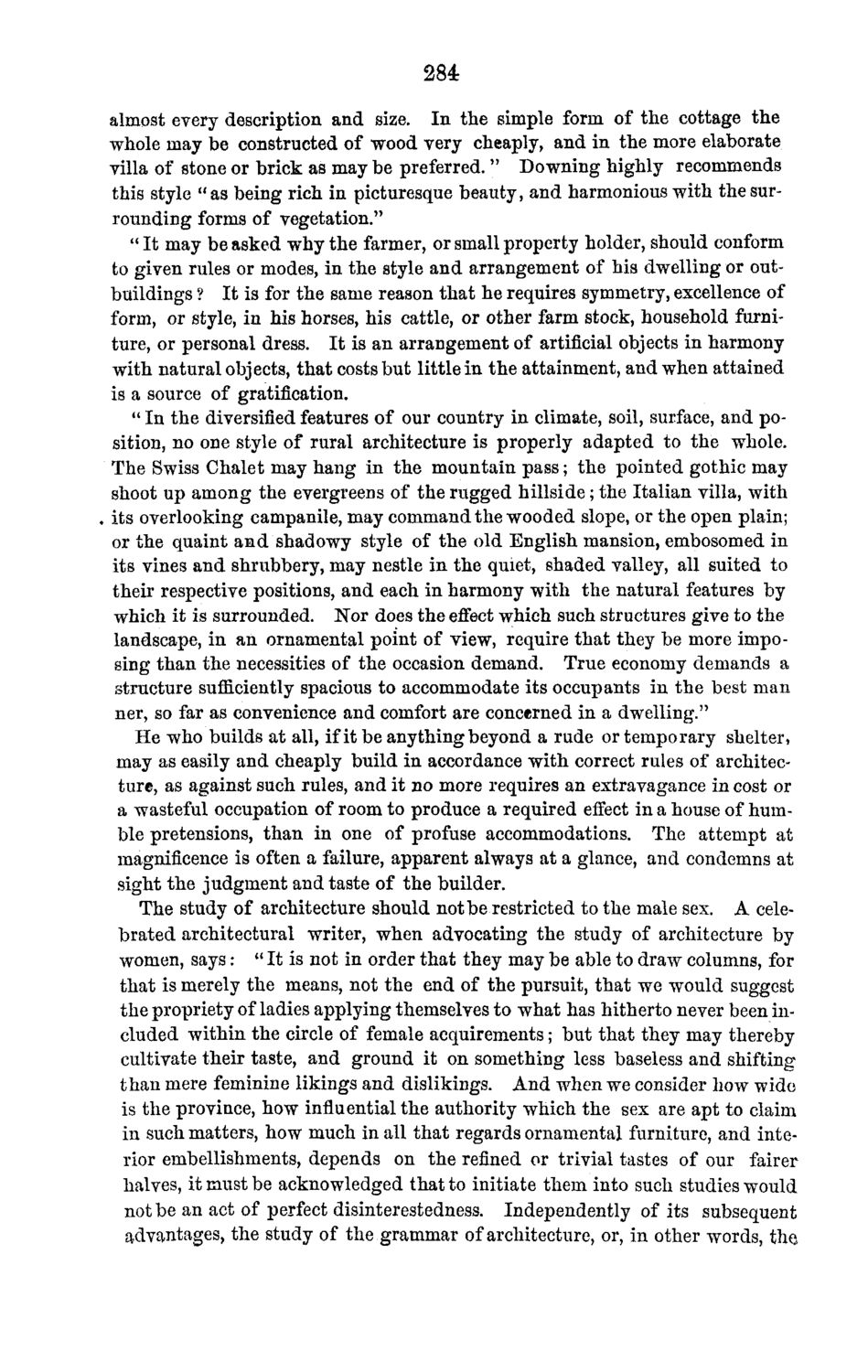| |
| |
Caption: Board of Trustees Minutes - 1870
This is a reduced-resolution page image for fast online browsing.

EXTRACTED TEXT FROM PAGE:
284: almost every description and size. In the simple form of the cottage the whole may be constructed of wood very cheaply, and in the more elaborate villa of stone or brick as may be preferred. " Downing highly recommends this style " as being rich in picturesque beauty, and harmonious with the surrounding forms of vegetation." " It may be asked why the farmer, or small property holder, should conform to given rules or modes, in the style and arrangement of his dwelling or outbuildings ? It is for the same reason that he requires symmetry, excellence of form, or style, in his horses, his cattle, or other farm stock, household furniture, or personal dress. It is an arrangement of artificial objects in harmony with natural objects, that costs but little in the attainment, and when attained is a source of gratification. " In the diversified features of our country in climate, soil, surface, and position, no one style of rural architecture is properly adapted to the wThole. The Swiss Chalet may hang in the mountain pass; the pointed gothic may shoot up among the evergreens of the rugged hillside; the Italian villa, with its overlooking campanile, may command the wooded slope, or the open plain; or the quaint and shadowy style of the old English mansion, embosomed in its vines and shrubbery, may nestle in the quiet, shaded valley, all suited to their respective positions, and each in harmony with the natural features by which it is surrounded. Nor does the effect which such structures give to the landscape, in an ornamental point of view, require that they be more imposing than the necessities of the occasion demand. True economy demands a structure sufficiently spacious to accommodate its occupants in the best man ner, so far as convenience and comfort are concerned in a dwelling." He who builds at all, if it be anything beyond a rude or temporary shelter, may as easily and cheaply build in accordance with correct rules of architecture, as against such rules, and it no more requires an extravagance in cost or a wasteful occupation of room to produce a required effect in a house of humble pretensions, than in one of profuse accommodations. The attempt at magnificence is often a failure, apparent always at a glance, and condemns at sight the judgment and taste of the builder. The study of architecture should not be restricted to the male sex. A celebrated architectural writer, when advocating the study of architecture by women, says: " It is not in order that they may be able to draw columns, for that is merely the means, not the end of the pursuit, that we would suggest the propriety of ladies applying themselves to what has hitherto never been included within the circle of female acquirements; but that they may thereby cultivate their taste, and ground it on something less baseless and shifting than mere feminine likings and dislikings. And when we consider how wide is the province, how influential the authority which the sex are apt to claim in such matters, how much in all that regards ornamental furniture, and interior embellishments, depends on the refined or trivial tastes of our fairer halves, it must be acknowledged that to initiate them into such studies would not be an act of perfect disinterestedness. Independently of its subsequent advantages, the study of the grammar of architecture, or, in other words, the
| |